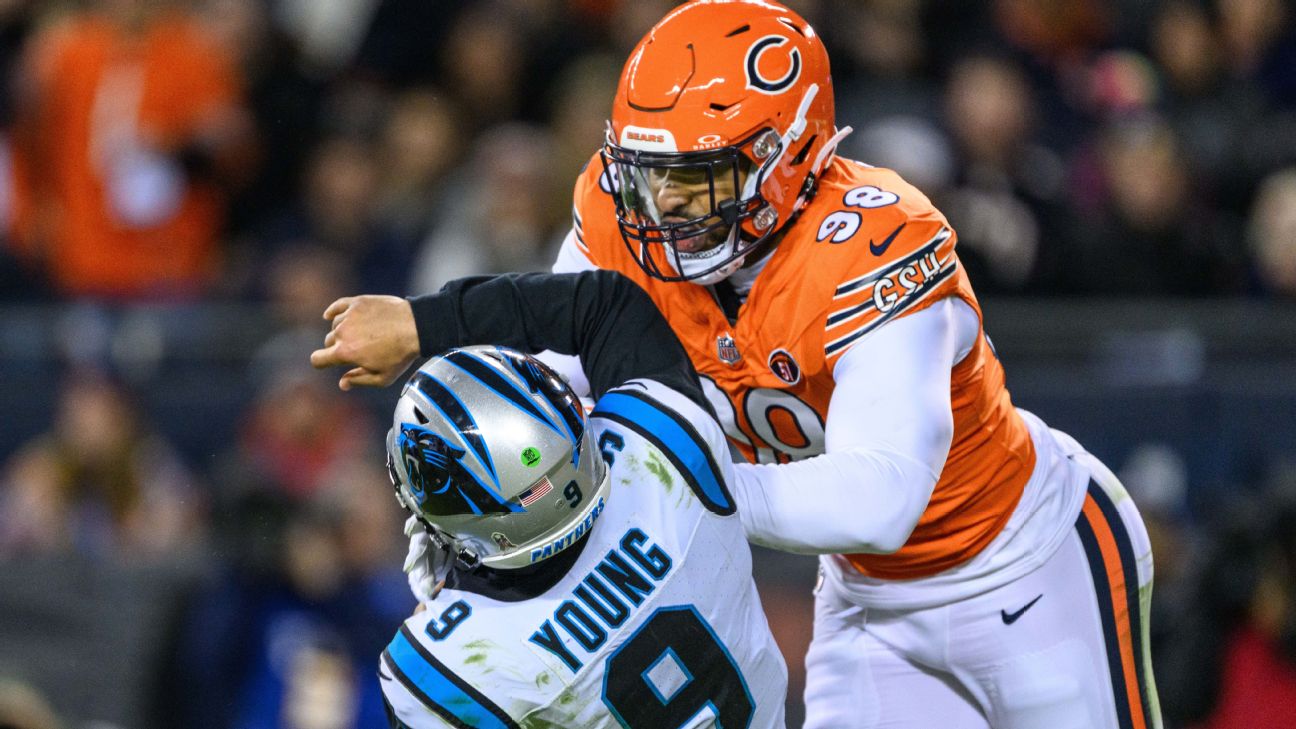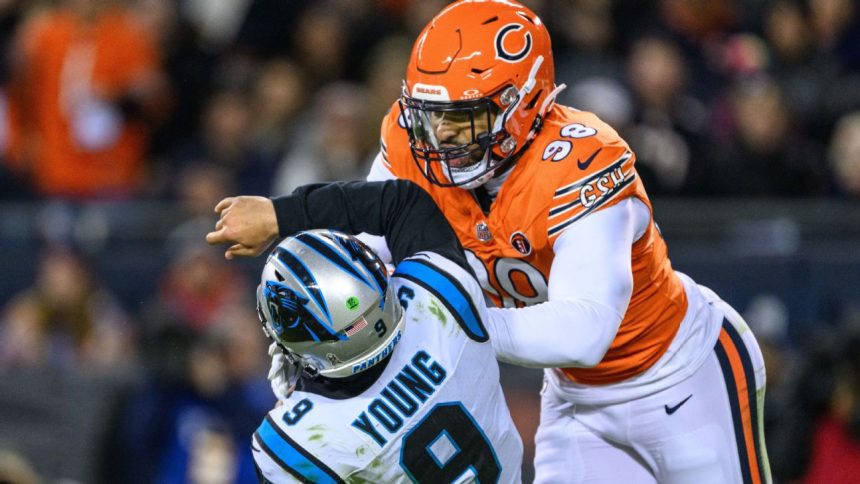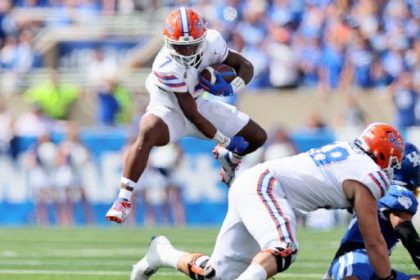
CHICAGO — Chicago Bears coach Matt Eberflus refers to it as the ‘Tez factor.
The impact felt by defensive end Montez Sweat, who the Bears acquired from the Washington Commanders before the trade deadline on Oct. 31 for a 2024 second-round pick, has been noticeable since he first suited up against the New Orleans Saints in Week 9.
Four days later, in his second game with Chicago — a 16-13 win over the Carolina Panthers — Sweat recorded five quarterback pressures, according to ESPN Stats & Information, which are the most by a Bears defender in a game during the last two seasons.
“Having the effect of Tez, the Tez factor, is a pretty cool thing to see,” Eberflus said. “You could feel him forcing those incomplete passes, the hits on the quarterback.
“That certainly has an effect on their passing game.”
The Bears held the Panthers to 170 yards passing, their lowest output by an opponent this season. Quarterback Bryce Young, who was the No. 1 overall pick in April, was sacked three times and consistently under duress.
Sweat is still looking for his first sack with Chicago, but he found ways into the backfield to disrupt Young by getting past blocks and forcing the quarterback to throw errant passes.
“We wanted to rattle Bryce Young a little bit,” Sweat said postgame. “I think we did a great job of that.”
Entering Week 10, the Bears had the lowest pressure rate in the NFL at 22%. Against the Panthers, Chicago’s defense generated pressure on 32% of Young’s drop backs, its second-highest rate this season.
The Bears traded for Sweat to improve their pass rush after finishing last in the league with 20 sacks last season.
“That factor that we’re talking about will just keep going,” Eberflus said. “I think he’s helping our guys rush.
“We’re rotating our guys a little bit better, keeping our guys fresh. I think that’s going to be important, because you want those rushers in the fourth quarter. The games are always going to be tight, and you want those guys at the end.”
The Bears still own the league’s lowest sack percentage (3.4%), total sacks (13) and are tied with the Saints and Rams with the fourth-fewest quarterback hits (45) through 10 weeks, but the defensive improvements starting with the increased pressure up front is starting to come through on the back end of the defense.
Four Chicago defenders were credited with pass breakups against the Panthers. Two would have been interceptions had they not been dropped.
“I feel like we had tight coverage throughout the duration of the game … allowing the D-linemen to get there,” cornerback Jaylon Johnson said. “They did a heck of a job pressuring, getting sacks.
“I feel like top to bottom, we played a solid game together.”
Against Detroit in Week 11, the test gets stiffer. The Lions boast a top-3 offensive line in pass-blocking efficiency and have allowed the fewest sacks (16). Facing a Chargers defensive line with Joey Bosa and Khalil Mack proved no problem for the Lions, who allowed no sacks and just two quarterback hits.
This is the Bears’ chance to see if the progress they’ve made up front is the byproduct of facing a struggling offense or a sign of real growth that has been sparked by the addition of a game-changer up front — one who is beginning to see how productive his unit can be when they turn hits and hurries into takedowns.
“All hats to the ball,” Sweat said. “‘Flus talks about all the guys getting to the ball. I think we’re going to be a great defense. We’ve just got to start generating some turnovers.”










